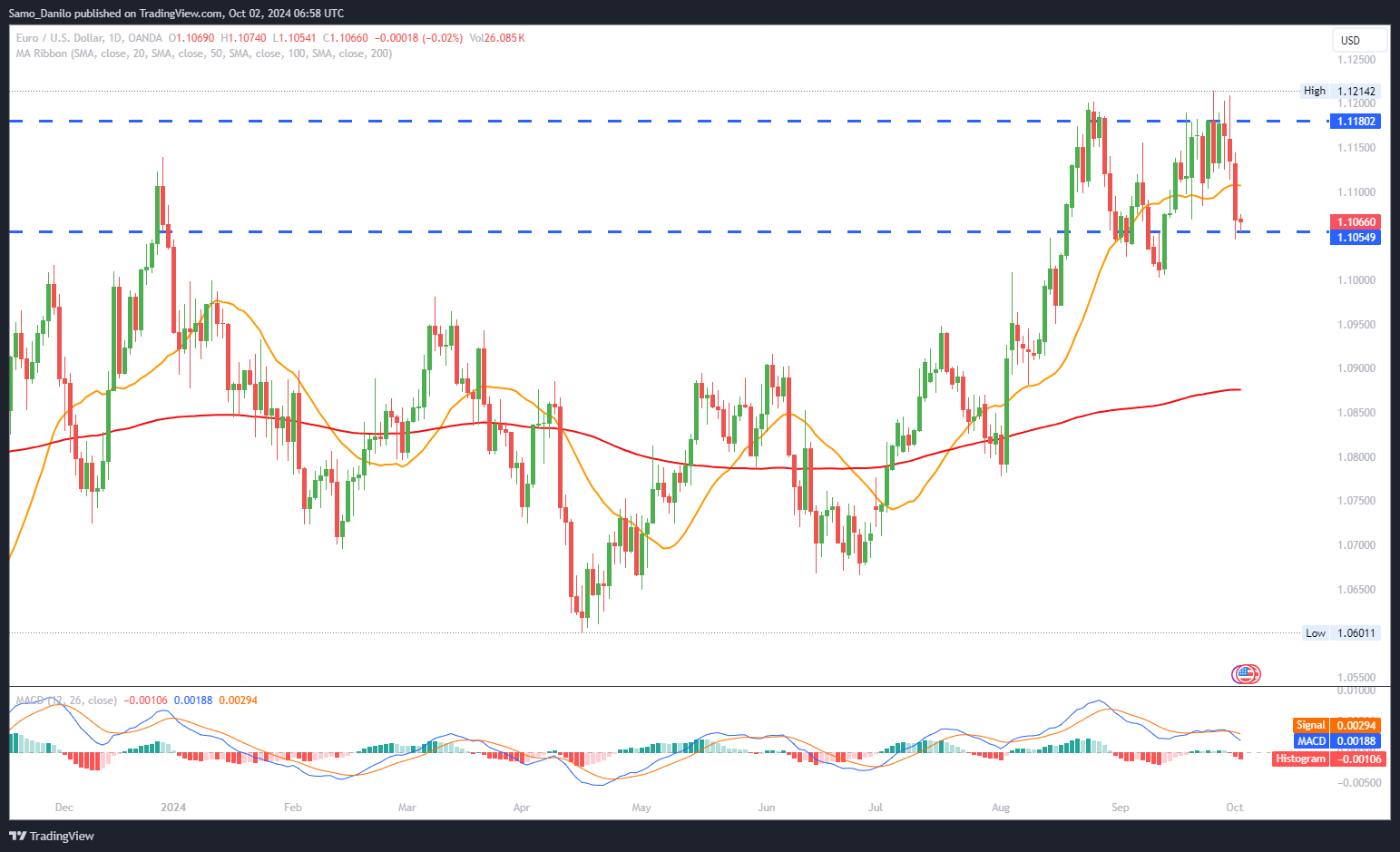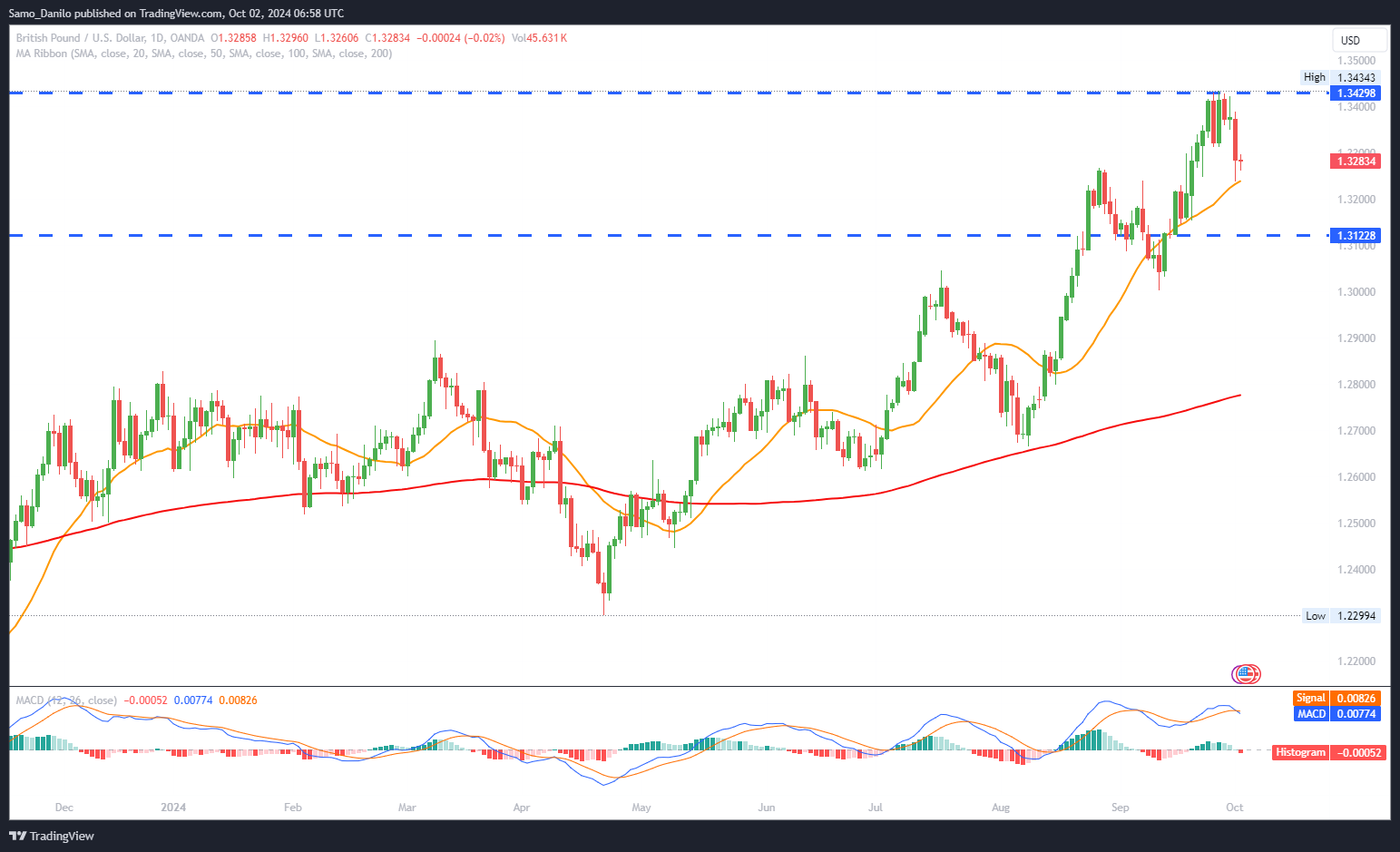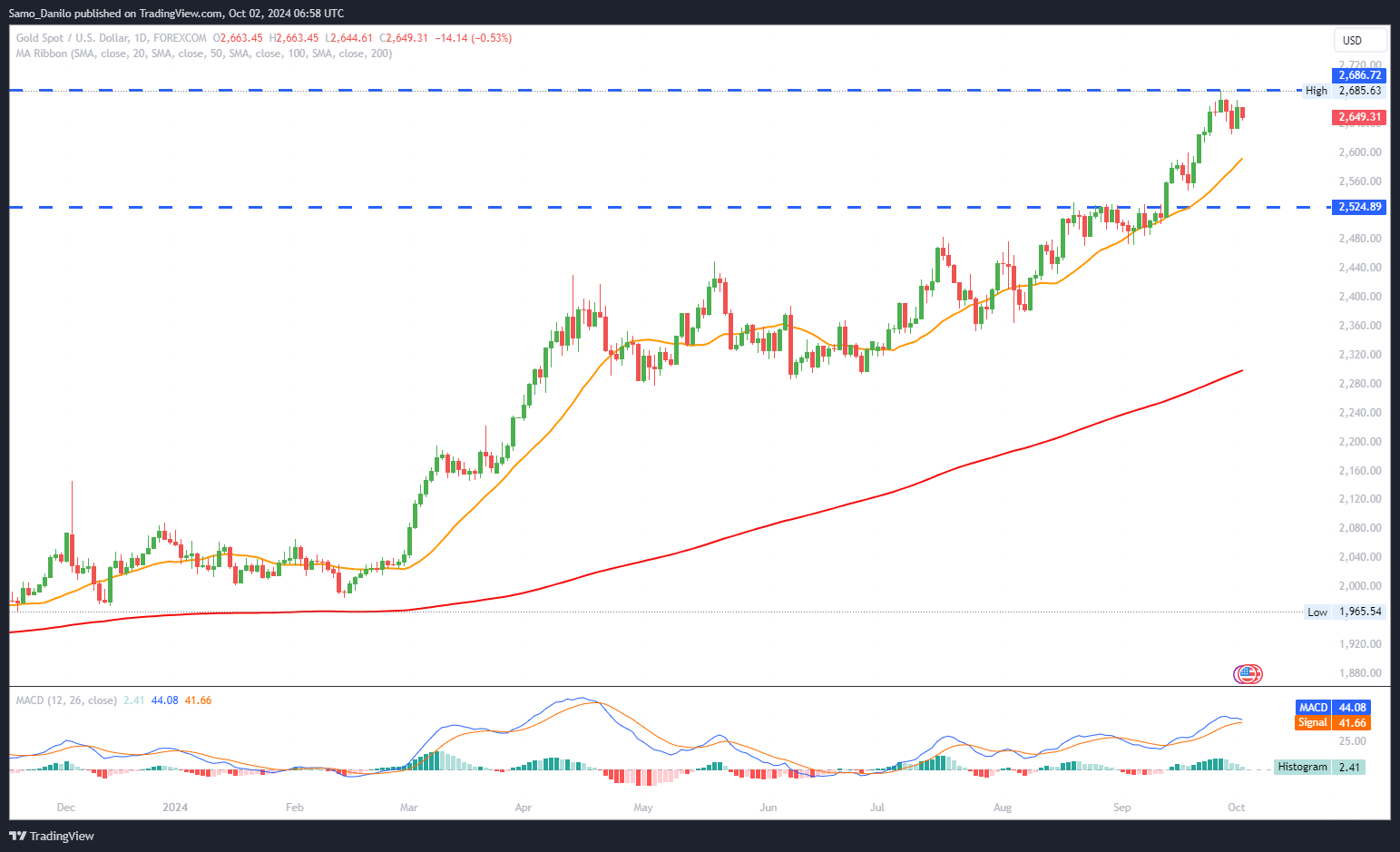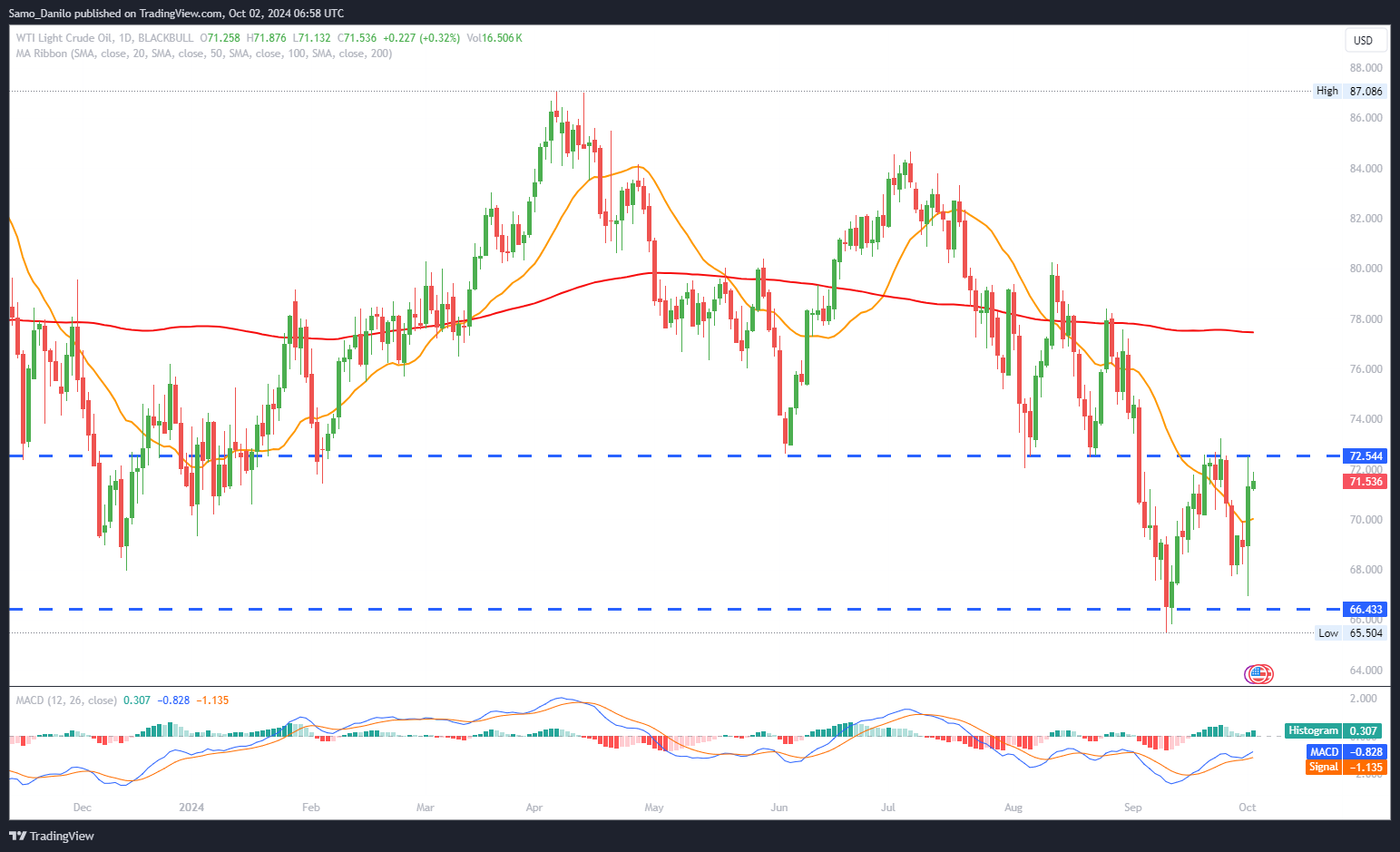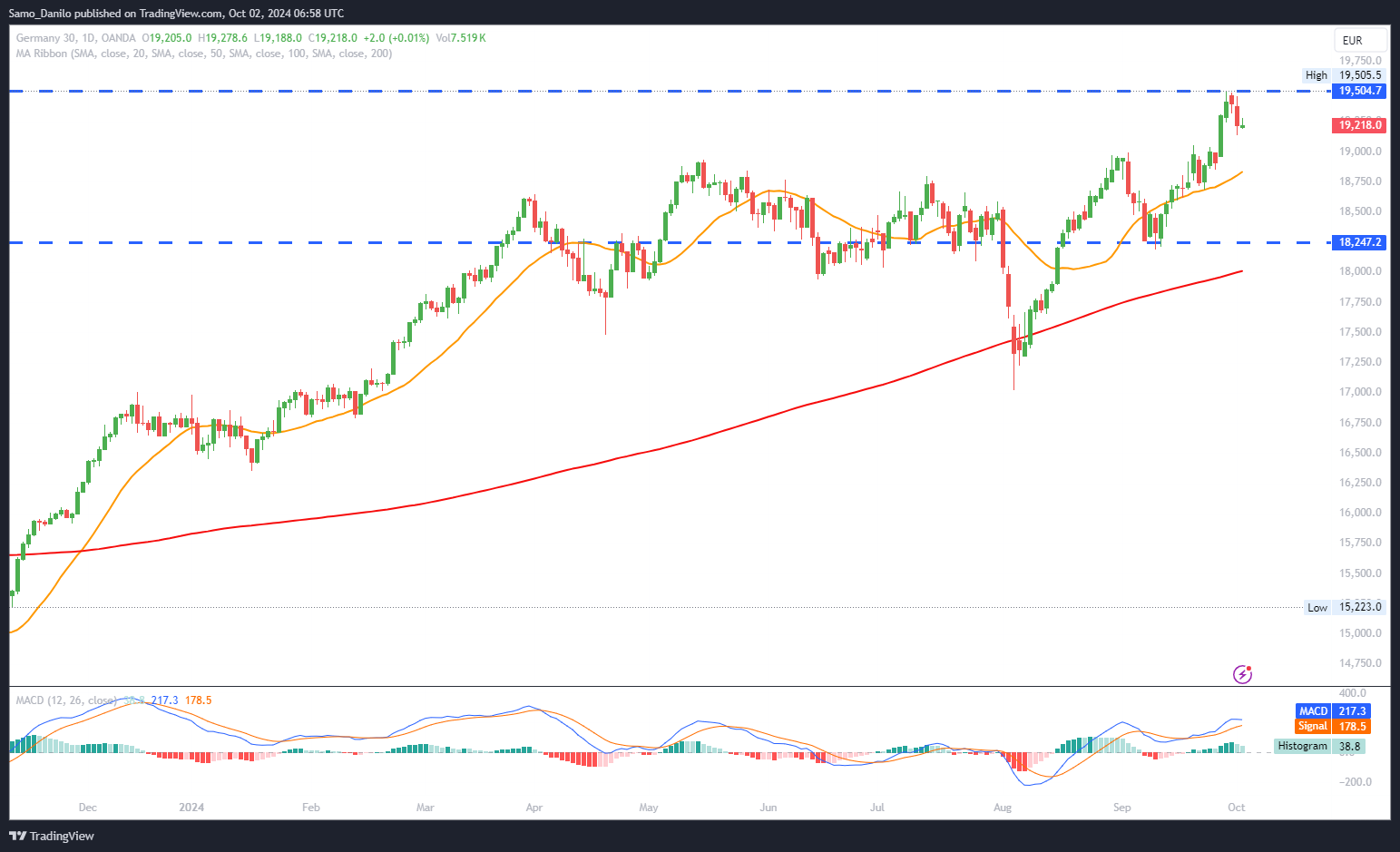EURUSD
- Price Movement: EUR/USD is showing bearish momentum, moving lower toward the 1.1050 level during the European morning session on Wednesday. This suggests selling pressure in the pair, with traders responding to fundamental data and market sentiment.
- Eurozone Inflation: Eurozone inflation eased significantly in September, with the HICP rising only 1.8% YoY compared to 2.2% in August. This marks a drop below the ECB’s target, signalling reduced inflationary pressures and potentially less urgency for the central bank to hike rates further.
- HICP Data: The preliminary estimate of the Eurozone HICP confirms the downward trend in inflation, reinforcing the outlook for more dovish monetary policy by the ECB, which can weaken the Euro further against the USD.
- US Economic Weakness: The USD experienced some downward pressure because of softer US economic data, with the ISM Manufacturing PMI flat at 47.2 in September, missing the forecast of 47.5. This signals ongoing economic struggles in the manufacturing sector, which could weigh on USD strength in the medium term.
- Geopolitical Concerns: Heightened geopolitical tensions in the Middle East are fuelling risk aversion, favouring safe-haven assets like the USD. This geopolitical backdrop could keep the EUR/USD under pressure, given the Euro’s sensitivity to external shocks.
Closing statement: The EUR/USD is currently under bearish pressure due to a combination of weaker Eurozone inflation, downbeat US economic data, and heightened geopolitical concerns. The pair may continue to trend lower, with the 1.1050 level acting as immediate support. A break below this level could pave the way for further downside, while stabilization around current levels would depend on improvements in macroeconomic conditions or easing geopolitical tensions.
GBPUSD
- Price Movement: GBP/USD is showing continued downside pressure, moving lower toward the 1.3250 mark early Wednesday. This downward movement follows the previous session’s decline, indicating sustained selling momentum in the pair.
- BoE Inflation Concerns: Bank of England policymaker Megan Greene cautioned that the UK’s consumption-driven recovery might spark another round of inflation. This has raised concerns about the BoE’s future policy path and could lead to uncertainty for the Pound if inflation expectations grow.
- US Data and Fed Guidance: Market participants are awaiting key US data, specifically the ADP Employment Change report and comments from Federal Reserve officials. These events will provide clues about the US labour market and Fed policy direction, influencing the GBP/USD pair’s short-term movements.
- BoE Hearings: In the UK, the upcoming BoE’s Monetary Policy Report Hearings on Thursday are expected to shed light on the central bank’s outlook and policy stance. Traders will be keen to see if the BoE signals any shifts in its approach amid inflation risks and economic recovery concerns.
- Geopolitical Risk The rising geopolitical tensions in the Middle East are exacerbating risk aversion in the market, which is weighing on the Pound and supporting safe haven flows into the USD. This sentiment could keep GBP/USD under pressure in the near term.
| SMA (20) | Rising |
|
|
| RSI (14) | Slightly Rising |
| |
| MACD (12, 26, 9) | Rising |
|
|
Closing statement: GBP/USD is facing sustained downside momentum, driven by concerns over potential inflationary pressures in the UK, geopolitical tensions, and market expectations for US economic data. The pair is vulnerable to further declines toward the 1.3250 support level, especially if upcoming data or BoE comments reinforce bearish sentiment. Conversely, any positive surprises in UK or US data could provide temporary relief for the pair.
GOLD
- Price Movement: Gold is consolidating its previous gains around the $2,650 level during Asian trading hours on Wednesday. This pause indicates that buyers are taking a breather after the recent recovery, potentially waiting for further directional cues.
- Geopolitical Risks: Ongoing fears of a potential Iran-Israel conflict continue to underpin demand for safe-haven assets like Gold. However, markets are showing signs of stabilizing, as investors believe that Iran might push for de-escalation, similar to its previous approach after April’s missile strikes.
- Mixed US Economic Data: Tuesday’s US data releases, including the ISM Manufacturing PMI and JOLTS Job Openings, provided no clear signals on the Fed’s interest rate direction. The mixed results left traders unsure about the Federal Reserve's future moves, keeping Gold’s outlook somewhat indecisive.
- Fed Commentary: Atlanta Fed President Raphael Bostic expressed openness to a potential rate cut if the labor market shows unexpected weakness. This dovish tone contrasts with other Fed officials’ recent hawkish comments, adding to the uncertainty and supporting Gold’s status as a hedge against policy volatility.
- US Employment Data: Market participants are now focused on the upcoming US ADP Employment Change report and speeches from various Fed policymakers. These events will be crucial in shaping expectations for the US economy and monetary policy, influencing Gold’s near-term direction.
| SMA (20) | Rising |
|
|
| RSI (14) | Rising |
|
|
| MACD (12, 26, 9) | Rising |
|
|
Closing statement: XAU/USD is currently consolidating near $2,650 amid geopolitical risks and mixed signals from the US economic data. Gold’s outlook remains sensitive to geopolitical developments and US labour market updates. A break above recent highs could open the door for further gains, while stabilization below current levels might signal a temporary pause in the bullish momentum.
CRUDE OIL
- Price Movement: WTI Crude Oil is trading around $71.00 on Wednesday, reflecting a relatively stable market amid heightened geopolitical concerns. The current price level indicates a cautious approach by traders as they assess both supply disruptions and demand dynamics.
- Geopolitical Tensions: Iran’s launch of over 200 ballistic missiles at Israel and the ensuing threats from both sides have heightened fears of a broader Middle East conflict. The potential for supply disruptions is raising concerns, providing a bullish undertone to Crude Oil prices despite the geopolitical uncertainty.
- Crude Inventories: The latest API data showed a smaller-than-expected drop in US crude inventories, with stockpiles declining by 1.5 million barrels for the week ending September 27. This modest draw suggests that supply constraints might not be as severe as anticipated, which could limit upward price momentum for WTI.
- Fed’s Comments: Fed Chair Jerome Powell’s less dovish remarks, pushing back against expectations for a significant rate cut in November, are exerting some downward pressure on WTI prices. Higher interest rates tend to dampen economic activity, potentially reducing energy demand.
- Fed Speakers: Market participants will closely watch speeches from several Fed officials for additional policy clues. Any hawkish signals could cap Crude Oil’s upside potential, while dovish remarks might ease some pressure on WTI.
| SMA (20) | Falling |
|
|
| RSI (14) | Slightly Rising |
| |
| MACD (12, 26, 9) | Slightly Rising |
|
Closing statement: WTI Crude Oil is trading cautiously around $71.00, caught between conflicting drivers of geopolitical risks and mixed economic signals. While tensions in the Middle East could support prices in the near term, the outlook remains uncertain amid less supportive US crude inventory data and the Fed’s ongoing stance on interest rates. Traders should remain alert to further geopolitical developments and Fed commentary for clarity on the next directional move.
DAX
- Market Trends: The DAX index is experiencing pressure as auto stocks continue to decline due to lower profit forecasts, which are dampening buyer demand. In contrast, military stocks like Rheinmetall AG are seeing gains, rallying 5.06% as investors react to rising geopolitical tensions related to potential conflicts involving Iran.
- Inflation Impact: The recent Eurozone inflation data has led to increased investor speculation regarding a possible rate cut by the ECB in October. The annual inflation rate dropped from 2.2% in August to 1.8% in September, suggesting easing inflationary pressures that may prompt a more accommodative monetary policy.
- Manufacturing Sector: Finalized manufacturing sector PMIs for Germany and the Eurozone have highlighted a bleak outlook for these economies. This data adds to concerns about economic growth, which could weigh on market sentiment and further influence DAX performance.
- Unemployment Data: On Wednesday, the unemployment figures for the Eurozone are drawing attention, with expectations that the unemployment rate will remain stable at 6.4% in August. This stability could influence investor sentiment regarding the health of the labor market and overall economic conditions.
- ECB Commentary: Investors are keenly awaiting commentary from ECB policymakers, particularly from Chief Economist Philip Lane. Insights into the central bank’s monetary policy approach and reactions to the latest inflation figures will be critical for shaping market expectations and potentially moving the DAX.
| SMA (20) | Rising |
|
|
| RSI (14) | Rising |
|
|
| MACD (12, 26, 9) | Rising |
|
|
Closing statement: The DAX is facing a mixed environment characterized by declining auto stocks and rising military-related equities amid geopolitical concerns. With lower inflation rates and weak manufacturing data contributing to speculation about an ECB rate cut, the index’s outlook remains uncertain. Market participants should closely monitor upcoming economic indicators and ECB communications, as these will play a pivotal role in guiding market sentiment and DAX direction in the near term.
